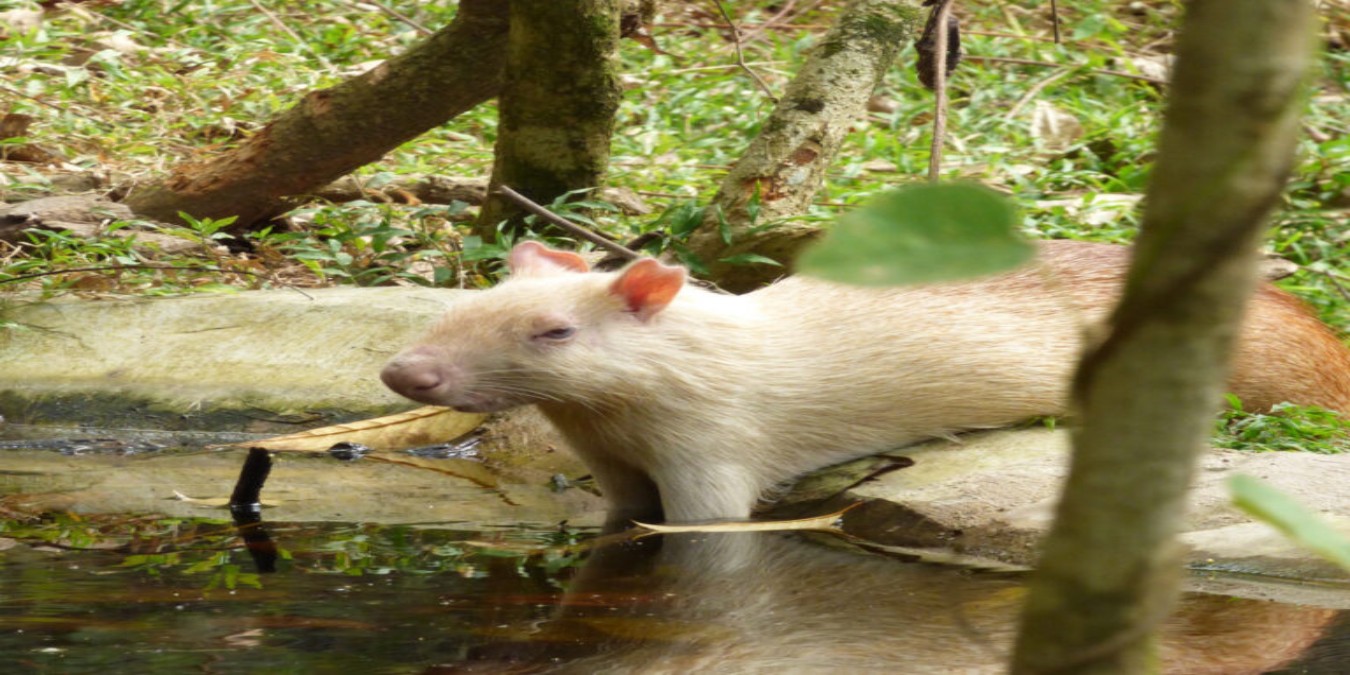The Red-rumped Agouti (Dasyprocta leporina) is a medium-sized rodent native to the forests of northern South America and the southern Caribbean, including Trinidad and Tobago. On Tobago, it is a familiar yet elusive inhabitant of woodland edges, forest clearings, and cultivated areas where fruiting trees are abundant.
While most individuals display a sleek brown coat with the characteristic reddish patch across the rump, rare colour morphs also occur. The golden or pale variety, as pictured here, is an uncommon but naturally occurring form that makes for a remarkable sight in the wild.
Ecologically, the Red-rumped Agouti plays a vital role as both a seed predator and disperser. By burying nuts and fruits for later consumption, it inadvertently aids in forest regeneration, helping to sustain Tobago’s rich biodiversity.
Measuring between 48–64 cm in body length, this diurnal species forages during the day and seeks cover when disturbed. Females typically give birth to one to four young after a gestation period of three to four months.
Although locally hunted in some areas, the Red-rumped Agouti is classified as Least Concern by the International Union for Conservation of Nature (IUCN), owing to its broad range and adaptability. In Tobago, it remains a valued part of the island’s natural heritage both for its ecological importance and its appeal to eco-tourists fortunate enough to encounter it.


Comments